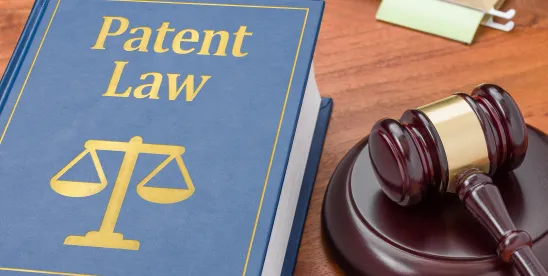On August 12, 2024, the United States Federal Circuit held that the enactment of the America Invents Act did not constitute a foundational change in the on-sale bar provision under 35 U.S.C. § 102(a)(1), finding the sale of products made using a secret process triggers the on-sale bar under pre-AIA precedent.1 The Court therefore affirmed the International Trade Commission’s invalidation of Celanese’s patents because Celanese sold products made using the patented process more than one year before the effective filing dates.2
Celanese is the owner of U.S. Patent Nos. 10,023,546; 10,208,004; and 10,590,095 (all AIA patents), which claim processes for making acesulfame potassium (Ace-K), an artificial sweetener. Celanese filed a petition with the ITC alleging respondents were importing Ace-K made using Celanese’s patented process.3 More than one year before the effective filing dates, however, Celanese used its process to make Ace-K in Europe and then sold it in the US.4 During the ITC proceeding, Celanese recognized that process claims could be invalid based on sales of products made using the claimed process under the pre-AIA on-sale bar. Celanese argued the AIA changed on-sale bar law such that its earlier sales of Ace-K did not invalidate the asserted process claims.5 The ITC disagreed, invalidating the process claims under the on-sale bar.
On appeal, the Federal Circuit rejected Celanese’s argument: “this court has long held that sales of products made using a secret process before the critical date would bar the patentability of that process,” which is consistent with Supreme Court precedent “going back to the 1980s.”6 The Court found that when enacting the AIA, Congress did not intend to alter the on-sale bar as applied to process inventions or to disturb the underlying rationale in precedent caselaw applying to the pre-AIA statute.7 Thus, the Court held that pre-AIA on-sale bar precedent applies to AIA patents.
In view of Celanese, patent owners should understand sales of products made using a secret process can invalidate later issued patents directed to that process. Moreover, past cases interpreting the on-sale bar remain intact post-AIA because the Court concluded Congress did not intend to alter the on-sale bar when enacting the AIA. Also of note, the Federal Circuit opinion did not mention Loper Bright, in which the Supreme Court recently overruled the Chevron deference. The impact of the Loper Bright decision on administrative agencies, such as the ITC, is still developing and the Federal Circuit here provided no further clarification. Thus, the impact of Loper Bright, at least on the ITC, remains unknown. Litigants should be prepared with potential different statutory interpretations in mind while continuing to monitor any challenges to ITC legal interpretation.
Footnotes:
1 Celanese Int’l Corp. v. Int’l Trade Comm’n, 22-01827 (Fed. Cir. August 12, 2024).
2 Id. at 2.
3 Id. at 3.
4 Id.
5 Id.
6 Id. at 6–7 (citing D.L. Auld Co. v. Chroma Graphics Corp., 714 F.2d 1144 (Fed. Cir. 1983); Pennock v. Dialogue, 27 U.S. 1, 19–24 (1829)).
7 Id. at 10–17.





 />i
/>i
